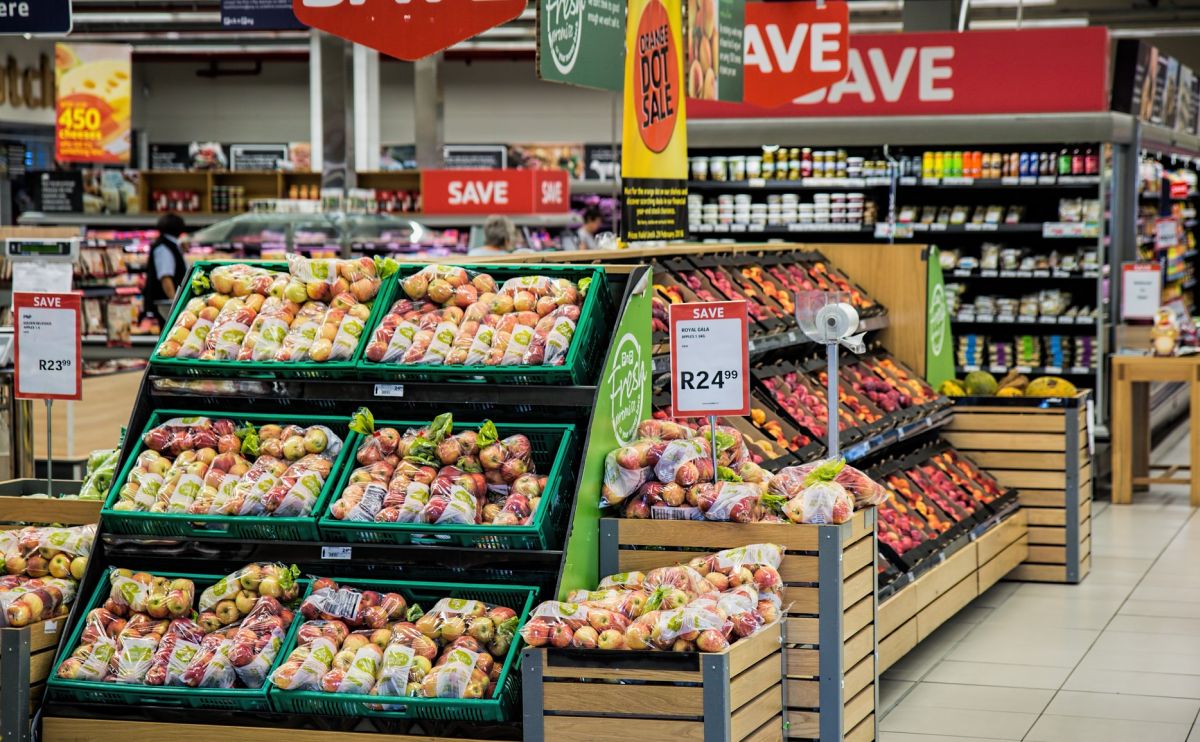How to Write a Unique Selling Proposition USP (+examples)
How do you let your customers and potential clients know that what you’re selling is different? The simple answer is […]
Read More »Become a successful marketing consultant: Learn more

If you have ever wanted to know what is meant by food marketing, you have come to the right article.
In this article, we explain what is meant by “food marketing” and review some simple strategies you can use to marketing your food business.
What is meant by food marketing?
Food marketing is the process of promoting and selling food products to consumers. It involves a wide range of activities, from advertising and packaging to pricing and promotion.
As we get started into the detail of describing what is meant by food marketing, and some example strategies, here are 3 very important articles that will help you lay a fantastic food marketing foundation:
Ok, lets get started.
Food marketing involves a wide range of activities, from advertising and packaging to pricing and promotion.
Food marketing has become increasingly important in today's competitive food industry, as it is essential for companies to differentiate their products from those of their competitors and to reach out to potential customers.
Food marketing is an essential part of the food industry and has been around for centuries.
In the early days, food was marketed through word of mouth, with people sharing information about the availability of food or the quality of food.
As technology advanced, food marketing moved from word of mouth to more sophisticated methods, such as print, radio and television advertising, and eventually to digital platforms.
To do this, food marketers must create an attractive brand image and a compelling message about the product. This message should be clear and understandable, and should focus on the product's benefits and features.
This means that a food product must be packaged in an attractive way, with eye-catching colors and a clear labeling system.
A low price can indicate that a product is of lower quality, while a higher price may indicate a higher quality product. Additionally, food marketers must be aware of current trends in the food industry and adjust their pricing strategies accordingly.
In fact, price is one of the most important aspects of food marketing, as it can be used to entice customers and increase profits. By setting prices that are competitive but also profitable, food businesses are able to attract more customers and increase their sales.
When setting prices for food products, businesses must take into account several factors, such as the cost of production, the demand for the product, and the competitive landscape.
If the price of a product is too high, customers may be reluctant to purchase it, while if the price is too low, the business may not make enough profit to sustain itself. Thus, businesses must carefully assess their costs and their target market before setting a price.
One high-quality example of price-based food marketing is McDonald’s.
McDonald’s is known for its low prices and its wide range of menu items, enabling it to appeal to a diverse range of customers. Furthermore, its prices are often lower than those of its competitors, allowing it to attract more customers. For instance, its signature Big Mac sandwich is far cheaper than that of its competitors, while its Happy Meals offer great value for money.
Another example of effective price-based food marketing is Starbucks.
Starbucks has successfully used pricing strategies to attract customers from all walks of life. For instance, it offers a wide variety of drinks, ranging from low-cost options such as coffee and tea to more expensive choices such as frappuccinos and iced lattes. Furthermore, its loyalty program rewards customers for their repeat purchases, allowing them to save money in the long run.
For excellent tutorials on how to optimize your pricing strategy, visit:
Coupons and discounts are used for many reasons. The primary reason coupons are used are to encourage a potential buyer to capture more value by realizing a better deal than what they would have received without the coupon or discount.
Another important reason for using coupons and discounts in your marketing is for tracking the success of campaigns. By using coupons, it is easier to match a campaign with a sale.
One last reason for using coupons and discounts in food marketing is to simply move more food inventory, faster.
These relationships can help to spread the word about a product and its benefits to a larger audience.
Influencer marketing is a new twist on an old marketing strategy of creating joint ventures and leveraging another company's customer list.
This is absolutely one of the most important strategies a marketer has in their tool kit.
This involves ensuring that the product is displayed in a way that attracts the attention of shoppers and that it is easily accessible. Additionally, food marketers must be aware of the current trends in the food industry and adjust their store displays accordingly.
Overall, food marketing is an essential part of the food industry and involves a wide range of activities to create awareness about a product and to persuade customers to purchase it. Through careful planning and execution, effective food marketing can help to differentiate a product from its competitors and to increase sales.
For more excellent articles on food marketing, go here:
References
1. Ellickson, P. (2010). Food Marketing to Children and Youth: Threat or Opportunity? Health Affairs, 29(5), 772-781.
2. Kim, Y. (2015). Food marketing: Challenges, trends and implications. International Journal of Food Science, 2015, 1-9.
3. Jeon, H., & Kim, J. (2013). Factors influencing food purchasing decisions: The role of food marketing. International Journal of Consumer Studies, 37(3), 278-286.
4. Schiffman, S. S., & Kanuk, L. L. (2000). Consumer behavior (7th ed.). Upper Saddle River, NJ: Prentice Hall.
5. Belch, G. E., & Belch, M. A. (2007). Advertising and promotion: An integrated marketing communications perspective (7th ed.). New York: McGraw-Hill.